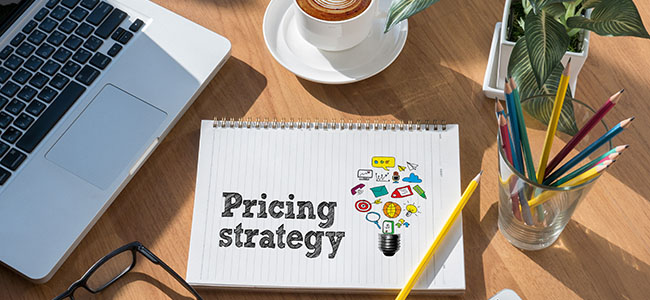“Find the right price for an irresistible offer, which, by the way, isn’t necessarily the lower price.” ― (W. Chan Kim, Business strategy advisor and author)
A good businessperson pays attention to the price of their products. With accountants by their side, they wisely analyse every expense, tax and logistical possibility to ensure their product goes out at the best rate for maximum profitability. Like with everything in society, no matter how thorough the maths, pricing strategies can also be influenced by the underlying psychological principles that drive consumer behaviour and purchasing decisions.
Ultimately, customers want to know that they’re getting either the best price point, the best quality, or the best value. Psychological pricing leans into that idea, and ethically uses price as a way to send the right signals to make customers feel one of these three benefits.
By decoding these subtle nuances, businesses gain a competitive edge by subtly adjusting their pricing strategies to lure customers and bolster profitability. Here we uncover the strategies and insights essential for businesses aiming to thrive in today’s dynamic market landscape.
Price Appearance
All businesses know that pricing an object at R49.99 is more likely to attract a sale than simply pricing it at R50. In the West people read from the left so the lower number on the left is attractive. Of course, many customers know this too, but there are other ways of making the appearance of the price boost sales.
The first of these is simply to leave off the cents in a price. Studies have shown that marking a product as R49 is more likely to make a sale than R49.00 simply because it looks shorter. In fact, according to The New York Times, even putting the currency sign at the start of a price can trigger purchasers into feeling the “pain of paying.” The best route? Remove the currency sign and cents altogether.
Premium Pricing and Price Anchoring
- Premium pricing is when a brand chooses to price themselves at the top of the market rather than set a competitive price. This can work due to the public’s long-established perception that higher prices equal higher quality or rarer products. This does not always work, but there is a far subtler way to take advantage of the same effect – price anchoring.
- Price Anchoring is where a business releases their first product at a premium price but releases subsequent products at more competitive rates. The existence of the premium product makes the other products seem that much more reasonable than they otherwise would and encourages sales. Price anchoring can also refer to a practice in retail where the store puts an expensive product alongside a cheaper one, thereby making the cheaper one’s price seem like a bargain. For example, retailers, putting prime virgin olive oil at R89.99 for 500ml next to the sunflower oil, makes the latter seem cost-effective, even if they have priced it above the usual market price.
Discount language
Offering discounts is a great way to sell off stock that may be moving too slowly or to encourage people to try a new product for the first time, but did you know the words you use can influence how likely it is for people to take up those discounts? For instance, telling people they get 50% more of a product for the same price has been shown to be far more effective as a sales incentive than offering them 33% off. This is despite the fact that these are the exact same offer.
Then of course, there is the crafted discount offered by many large supermarkets these days. With the crafted discount you mark a product up significantly and then tell customers they can get the normal price if they buy two. For example: Bacon is usually R35 a packet, so mark it at R50 a packet and then offer the discount of “2 for R70”. Not every business owner will be comfortable with using this tactic without ensuring that the customer does in fact get some benefit (by offering “2 for R65” perhaps) but it certainly should boost sales.
Decoy Effect
Decoy pricing is a strategy companies use to convince clients that a slightly more expensive product is in fact the one offering the best value. It takes advantage of how buyers weigh price relative to the value they perceive. With decoy pricing the salesperson will offer clients products they know they will not take simply to guide them to the one they actually want to sell. For instance, they might be trying to sell you a car that’s a little out of your price range, but then say, “You are right, let’s look at this one which is in the price range you were looking for.” Of course, the new option is significantly lower quality, thereby highlighting the original car as the wiser purchase even if it is a little more expensive.
This gets even smarter when we take into account a psychological state known as the compromise effect, in which customers will gravitate toward the middle ground in any offer. If there are three choices for fibre connections with the fastest speeds being the most expensive, customers are more likely to take the medium speeds at the medium price. Some restaurants who know this make their second cheapest bottle of wine, the one with the highest mark up. Want to make your product seem better value? Simply offer the customer one that’s much more expensive and one that’s much cheaper as well.
Tiered pricing
Let’s say the product you want customers to buy is, in fact, the most expensive one. Then what you need is tiered pricing. This strategy lays the benefits of the highest priced product out in a way that makes it seem like a bargain compared with the others.
For example: Your lowest tier product has 3 features for R50, the middle tier has four features for R75, and the top tier has eight features for R100. In this case the middle product is a kind of decoy that could have been priced with one or two more features, but by giving the top tier product that sudden jump-up in feature numbers, the salesperson can be sure the client is much more likely to buy that.
We can help you formulate a pricing strategy tailored to your business model.
Disclaimer: The information provided herein should not be used or relied on as professional advice. No liability can be accepted for any errors or omissions nor for any loss or damage arising from reliance upon any information herein. Always contact your professional adviser for specific and detailed advice.
© CA(SA)DotNews


